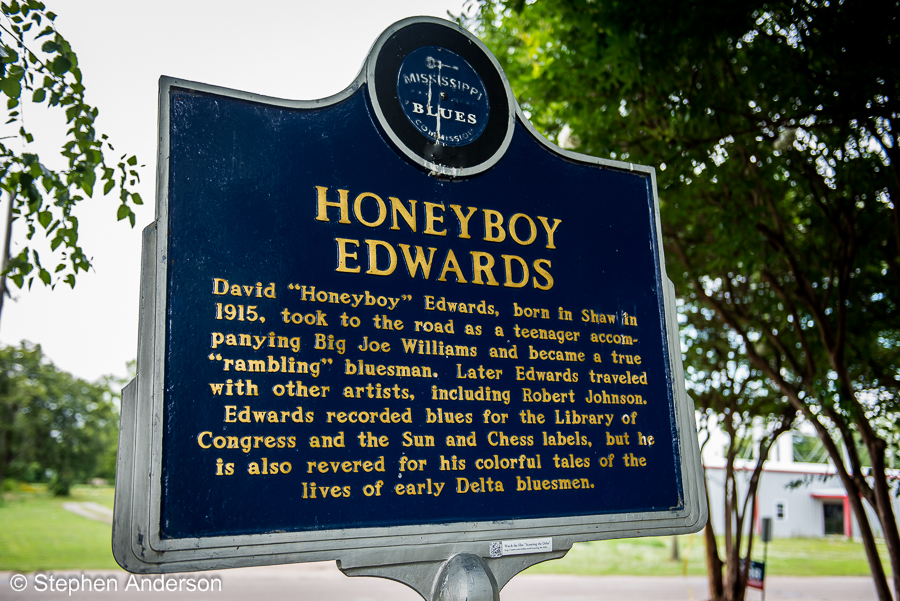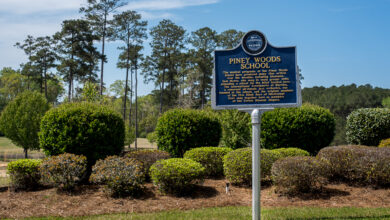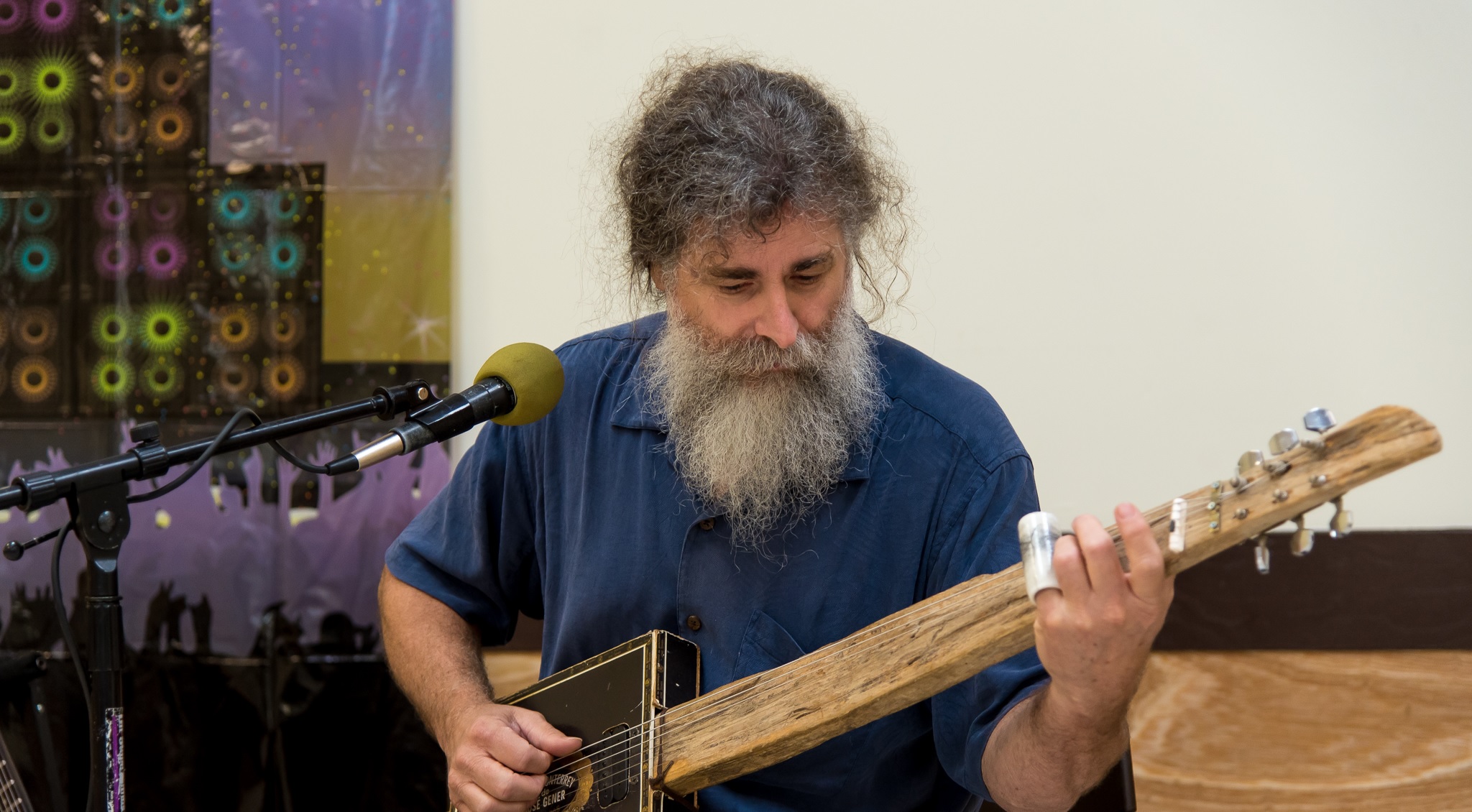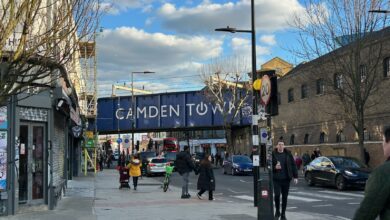Mississippi Blues Trail Series: Honeyboy Edwards
 By Deborah Chatham .
By Deborah Chatham .
Photos by Stephen Anderson .
Edited by Johnny Cole
The Southland Music Line delves into the life of a true blues legend, David “Honeyboy” Edwards, as part of our Mississippi Blues Trail Series. Born on June 28, 1915, in Shaw, Mississippi, Edwards was affectionately called Honeyboy by his older sister, a name that would stick with him throughout his illustrious career. His musical journey began at a tender age, learning from his father, who played the violin and guitar.
As a young boy, Honeyboy was immersed in the sounds of pre-World War II blues musicians who were a regular feature in the region. This exposure led him to play with some of the blues greats, including Charlie Patton and his greatest mentor, Big Joe Williams. Like the itinerant preachers of the day, these bluesmen developed a following by traveling on music circuits throughout the southland, setting the stage for Honeyboy’s journey as a traveling bluesman.
 From left to right: David “Honeyboy” Edwards in 2006 (photo by Bob O’Neal); Big Joe Williams with David “Honeyboy” Edwards (photo by Amy Van Singel, BluEsoterica Archives & Productions)
From left to right: David “Honeyboy” Edwards in 2006 (photo by Bob O’Neal); Big Joe Williams with David “Honeyboy” Edwards (photo by Amy Van Singel, BluEsoterica Archives & Productions)
In those days, Edwards would find work by hitchhiking, playing on street corners, at country stores, or anywhere the police wouldn’t run him off. He fully embraced this vagabond lifestyle, hopping freight trains to travel to cities like St. Louis, Missouri, and eventually up to Chicago, Illinois. His performances were not limited to traditional venues; he would often play with travelling bluesmen at places away from home, making anywhere his stage. Edwards particularly enjoyed playing at places that drew large crowds of workers, whether it was a highway crew, farm workers, or at levee camps along the Mississippi River. Honeyboy truly lived the picture of the rambling bluesman, often being paid in nickels and dimes, food, or a few dollars from a store owner hoping to drum up business on a Saturday night.
Honeyboy loved to say, “The world don’t owe me nothin’ ,” which subsequently became the title of his autobiography, released in 1997. It was subtitled The Life and Times of Bluesman Honeyboy Edwards. In the book, Edwards recounts his childhood, young adulthood playing throughout the South, and his arrival in Chicago in the 1950s, representing the spread of the blues to that region. Included in this memoir, Honeyboy Edwards’s accounting of the events surrounding Robert Johnson’s poisoning is recognized as the definitive story of Johnson’s death.
 David “Honeyboy” Edwards
David “Honeyboy” Edwards
The Library of Congress recognized the importance of David “Honeyboy” Edwards’s contributions to delta blues by having folklorist Alan Lomax record multiple album sides in 1942. Lomax amassed over 15 album sides that are preserved for posterity. Despite his name recognition and popularity, Edwards did not record commercially until the 1950s. Honeyboy continued throughout the latter half of the 20th century to write, record, and perform blues music along with many of the greats of the day, including Kansas City Red, Sunnyland Slim, and Floyd James. As a result, Edwards is recognized as one of the longest-performing bluesmen who stayed active well into the 21st century up until his death. He appeared on the 2007 album Last of the Great Mississippi Delta Bluesmen: Live in Dallas, along with Robert Lockwood, Jr., Pinetop Perkins, and Henry Townsend. This album won a Grammy in 2008 for Best Traditional Blues Album. In 2010, David “Honeyboy” Edwards received a Grammy for Lifetime Achievement. That year, Mick Fleetwood wrote the article honoring Honeyboy Edwards for the Grammy program.
Honeyboy Edwards epitomized the delta bluesman and had a career spanning over 75 years! He influenced many of today’s blues musicians. He played with various artists, including the original Fleetwood Mac, when he was featured on three tracks of their album Blues Jam recorded at Chess Records (Chicago, 1969).
 Mississippi Blues Trail marker honoring David “Honeyboy” Edwards “reverse side” (photo by Stephen Anderson)
Mississippi Blues Trail marker honoring David “Honeyboy” Edwards “reverse side” (photo by Stephen Anderson)
Edwards was introduced to a new generation of music fans when he appeared as himself in the movie Walk Hard: The Dewey Cox Story (2007). Honeyboy never stopped performing and had engagements scheduled up until his death. He had just performed in the Spring of 2011 but had to cancel some shows that summer due to increasing illness with congestive heart failure. Always the consummate performer, Honeyboy Edwards passed away at home in his sleep on August 29, 2011. Edwards had been scheduled to perform at Chicago’s Millennium Park at noon the next day.
David “Honeyboy” Edwards stands out as one of the original Mississippi bluesmen who embodied the lifestyle, creativity, and soul of a bygone era. His music will continue to be preserved, studied, and emulated for many years to come.
 Mississippi Blues Trail marker honoring David “Honeyboy” Edwards “front side” in Shaw, MS (photo by Stephen Anderson)
Mississippi Blues Trail marker honoring David “Honeyboy” Edwards “front side” in Shaw, MS (photo by Stephen Anderson)
 Mississippi Blues Trail marker honoring David “Honeyboy” Edwards “reverse side” in Shaw, MS (photo by Stephen Anderson)
Mississippi Blues Trail marker honoring David “Honeyboy” Edwards “reverse side” in Shaw, MS (photo by Stephen Anderson)
 David “Honeyboy Edwards” (courtesy of the Mississippi Blues Trail marker in Shaw, Mississippi)
David “Honeyboy Edwards” (courtesy of the Mississippi Blues Trail marker in Shaw, Mississippi)
Click Here for Other Articles in our Mississippi Blues Trail Series.
References:
● Davidhoneyboyedwards.com
● Earlyblues.org
● Grammy.com website.
● Earwigmusic.com website.
● Mississippibluestrail.org
Page Designed & Edited by Johnny Cole
© The Southland Music Line. 2024.
All rights reserved

COPYRIGHT NOTICE: We welcome requests for permission to use content from The Southland Music Line website and Facebook page. Any shared articles or photos may not be altered, edited nor cropped and must include the appropriate copyrights of The Southland Music Line.





